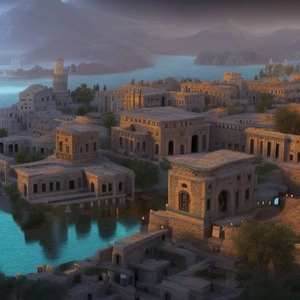Ardukh
Ardukh is the second-largest city in Khutu and the most important center of the northern part of that country. It has around 31,000 inhabitants and is located at the confluence of the Isikh and Aghong rivers where the Isikh flows onward to the sea. Nestled in the valleys, its city center is low-lying and typified by northern architectural styles more common in Basai, with hills surrounding the city and rivers on all sides. While there was a settlement at Ardukh throughout the reign of the Khutuan triumvirs, only in the early Imperial period did Ardukh become a city in its own right, at times rivalling Onighus in size and importance within the province Khutu. After the end of the empire, Onighus assumed a much more central role due to the presence of the seat of government (the Mausoleum of Eluli Ula) there, while Ardukh remained an important economic center as well as a hub for intellectual life. Ardukh is the home of one of the largest and oldest mystic Academies, third in status behind only those of Dundures and Omba. Throughout the seventh and eighth centuries, Ardukh has been home to an intellectual renaissance as typified by the political treatise, Record of Gambits of Alago Murati.
